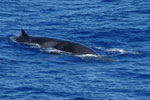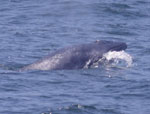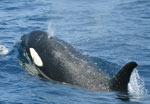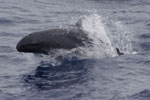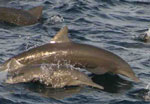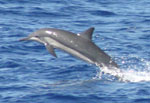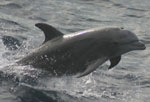Marine Mammal Permits and AuthorizationsProposed Changes to Permit Regulations Overview of Marine Mammal Permits
Submitting Applications Processing time for an application starts once the application is determined complete, not on the date received. Manatees, polar bears, sea otters, walruses, and dugongs are under the jurisdiction of the U.S. Fish and Wildlife Service; you must contact them regarding permits and authorizations for these species. If you have any questions, please contact the Permits, Conservation and Education Division at 301-713-2289 before submitting an application. ESA-Listed Marine Mammals
Non-ESA-Listed Marine Mammals
Scientific Research and Enhancement Permit
For faster processing, you may submit your application electronically on a 3.5" floppy disk, CD, or as an email attachment. Submitting your application electronically will expedite the review process. However, you will still need to mail a signed original and two hard copies of the application along with the electronic copy. General Authorization for Scientific Research The 1994 amendments to the MMPA provided for the General Authorization of Scientific Research (GA) for activities involving only "Level B Harassment" of non-listed marine mammals (i.e., those species not listed as endangered or threatened under the ESA). Essentially, this is a simplified process where researchers submit a Letter of Intent (LOI) that contains detailed information such that NOAA Fisheries can accurately determine whether the research is bona fide and the impacts of the activities are limited to Level B Harassment. Should NOAA Fisheries determine that the project is eligible, based on the information provided by the applicant, no public comment period is necessary. Rather, the researcher receives a letter of Confirmation (LOC) that they are covered under the GA and may commence research activities immediately.
For faster processing, you may submit your application electronically on a 3.5" floppy disk, CD, or as an email attachment. Submitting your application electronically will expedite the review process. However, you will still need to mail a signed original and two hard copies of the application along with the electronic copy. Commercial or Educational Photography Permit Similar to the restrictions that apply to the General Authorization for Scientific Research, the 1994 MMPA amendments also provided new authority to issue permits for educational and commercial photography involving only Level B Harassment of non-listed marine mammals (i.e., those species not listed as endangered or threatened under the ESA).
For faster processing, you may submit your application electronically on a 3.5" floppy disk, CD, or as an email attachment. Submitting your application electronically will expedite the review process. However, you will still need to mail a signed original and two hard copies of the application along with the electronic copy. Import for Public Display
Again, NOAA Fisheries is solely charged with these mandates as they relate to whales, dolphins, porpoises, seals, and sea lions. The U.S. Fish and Wildlife Service handles these issues for polar bears, walruses, sea otters, and manatees. Although no permits to capture wild marine mammals for purposes of public display have been issued since 1989, NOAA Fisheries still retains jurisdiction over any captures from the wild and any first-time imports of captive marine mammals into the U.S. NOAA Fisheries is also mandated by the MMPA to ensure that U.S.-based captive marine mammals, and their progeny, are afforded comparable protection after export to foreign facilities.
For faster processing, you may submit your application electronically on a 3.5" floppy disk, CD, or as an email attachment. Submitting your application electronically will expedite the review process. However, you will still need to mail a signed original and two hard copies of the application along with the electronic copy. Marine Mammal Parts A letter of authorization is required for importing or exporting "pre-Act" marine mammal parts for commercial or personal use. Pre-Act parts are either those marine mammal parts taken prior to enactment of the Marine Mammal Protection Act (MMPA) of 1972 or those parts of species listed under the Endangered Species Act (ESA), that are at least 100 years old.
If you would like to receive marine mammal parts taken from stranded marine mammals after 1972 for use for scientific research, education, or curation, please contact the appropriate NOAA Fisheries Stranding Network Coordinator. If you would like to import or export marine mammal parts taken after 1972 for scientific research or enhancement purposes, you will need to apply for a scientific research permit. You will also need to apply for a scientific research permit if you plan on conducting research using marine mammal cell lines. |
|
|
|||||||||||||||||||||||||||||||||
| OPR Home | About OPR | Species | Permits | Laws & Policies | Programs | Education | Publications | |||||||||||||||||||||||||||||||||
|
|||||||||||||||||||||||||||||||||
|
|||||||||||||||||||||||||||||||||



